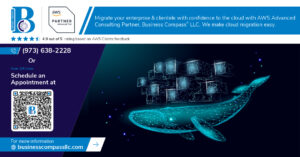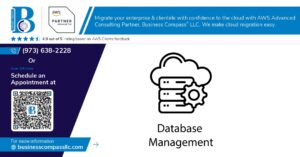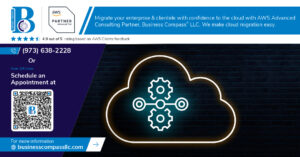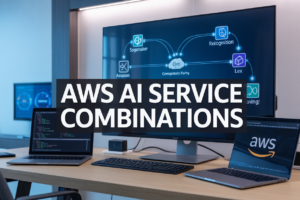Are you struggling with an outdated monolithic architecture that’s slowing down your business? 🐌 You’re not alone. Many companies find themselves trapped in a system that’s difficult to scale, update, and maintain. But there’s hope on the horizon: microservices architecture.
The shift from monolithic to microservices isn’t just a trend—it’s a game-changer for businesses looking to stay competitive in today’s fast-paced digital landscape. However, this transition can be daunting. Without the right approach, you might end up with a fragmented system that’s even harder to manage than your original monolith.
In this comprehensive guide, we’ll walk you through the best practices for migrating from a monolithic to a microservices architecture. From understanding the fundamental differences between these architectures to implementing effective communication strategies and managing cultural changes, we’ve got you covered. Let’s dive in and explore how you can transform your system to be more agile, scalable, and resilient than ever before. 🚀
Understanding Monolithic vs Microservices Architecture
Key differences between monolithic and microservices
Monolithic and microservices architectures represent two distinct approaches to software development. Let’s explore their key differences:
| Aspect | Monolithic | Microservices |
|---|---|---|
| Structure | Single, tightly-coupled unit | Multiple, loosely-coupled services |
| Scalability | Scales as a whole | Individual services can scale independently |
| Development | Simpler initial setup | More complex initial setup |
| Deployment | Single deployment | Multiple, independent deployments |
| Technology stack | Uniform across application | Can vary between services |
Advantages of microservices architecture
Microservices offer several benefits that make them attractive for modern software development:
- Improved scalability
- Enhanced fault isolation
- Easier maintenance and updates
- Flexibility in technology choices
- Better alignment with business domains
Common challenges in transitioning
While microservices offer numerous advantages, the transition from monolithic to microservices architecture is not without its challenges:
- Increased complexity in system design
- Need for robust inter-service communication
- Data management across distributed services
- Organizational changes required for effective implementation
Now that we’ve covered the fundamental differences and advantages of microservices, as well as the challenges in transitioning, let’s move on to planning your migration strategy.
Planning Your Migration Strategy
A. Assessing your current monolithic architecture
Before embarking on your migration journey, it’s crucial to thoroughly evaluate your existing monolithic system. This assessment will provide valuable insights into your application’s structure, dependencies, and potential challenges.
Key aspects to consider during the assessment:
- Codebase complexity
- Database structure
- External dependencies
- Performance bottlenecks
- Scalability limitations
| Aspect | Analysis Method | Importance |
|---|---|---|
| Codebase | Static code analysis | High |
| Database | Schema review | High |
| Dependencies | Dependency mapping | Medium |
| Performance | Profiling tools | Medium |
| Scalability | Load testing | High |
B. Identifying suitable services for decomposition
Once you’ve assessed your monolithic architecture, the next step is to identify which components are prime candidates for migration to microservices. Look for:
- Loosely coupled modules
- Clearly defined boundaries
- High-value business capabilities
- Frequently updated features
C. Establishing clear goals and success metrics
Define specific, measurable objectives for your migration project:
- Performance improvements
- Scalability targets
- Deployment frequency
- Time-to-market reduction
D. Creating a phased migration roadmap
Develop a step-by-step plan for your migration:
- Start with non-critical services
- Implement strangler pattern
- Gradually migrate core functionalities
- Continuously monitor and adjust
Now that we have a solid migration strategy in place, let’s explore how to design effective microservices that will form the backbone of your new architecture.
Designing Microservices
A. Defining service boundaries
When designing microservices, defining clear service boundaries is crucial for creating a well-structured and maintainable system. Service boundaries should be based on business capabilities and domains, rather than technical concerns. This approach ensures that each microservice has a specific purpose and responsibility within the overall architecture.
To define effective service boundaries:
- Identify business capabilities
- Analyze data dependencies
- Consider team structure
- Evaluate scalability requirements
| Consideration | Description |
|---|---|
| Business capability | Align services with specific business functions |
| Data ownership | Ensure each service owns its data |
| Team structure | Match services to team expertise and organization |
| Scalability | Design services that can scale independently |
B. Choosing the right size for your microservices
The size of your microservices can significantly impact their effectiveness and maintainability. While there’s no one-size-fits-all approach, finding the right balance is essential. Too large, and you risk creating mini-monoliths; too small, and you may introduce unnecessary complexity.
Consider these factors when sizing your microservices:
- Complexity of the business domain
- Team size and structure
- Deployment and scaling requirements
- Performance considerations
C. Implementing domain-driven design principles
Domain-driven design (DDD) principles can greatly enhance the design of your microservices. By focusing on the core domain and business logic, DDD helps create more meaningful and maintainable service boundaries.
Key DDD concepts to apply:
- Bounded Contexts
- Ubiquitous Language
- Aggregates and Entities
- Domain Events
D. Ensuring loose coupling and high cohesion
Loose coupling between microservices and high cohesion within each service are fundamental principles for creating a robust microservices architecture. Loose coupling allows services to evolve independently, while high cohesion ensures that each service has a clear and focused purpose.
To achieve loose coupling and high cohesion:
- Use well-defined APIs for inter-service communication
- Implement asynchronous messaging patterns
- Avoid shared databases between services
- Group related functionalities within a single service
Now that we’ve covered the key aspects of designing microservices, let’s explore how to implement effective communication between these services in the next section.
Implementing Effective Communication
A. Selecting appropriate inter-service communication patterns
When transitioning from a monolithic architecture to microservices, choosing the right communication patterns is crucial for system efficiency and reliability. Let’s explore the most common patterns:
-
Synchronous Communication:
- REST API
- gRPC
-
Asynchronous Communication:
- Message Queues
- Pub/Sub Model
| Pattern | Pros | Cons |
|---|---|---|
| REST API | Simple, widely adopted | Can lead to tight coupling |
| gRPC | High performance, strongly typed | Limited browser support |
| Message Queues | Decoupled, fault-tolerant | Increased complexity |
| Pub/Sub | Scalable, event-driven | Potential message loss |
Choose the pattern that best fits your specific use case and system requirements.
B. Implementing API gateways
API gateways serve as a single entry point for client requests, routing them to appropriate microservices. They offer several benefits:
- Request routing
- Authentication and security
- Rate limiting and throttling
- Caching
- Monitoring and analytics
Consider using popular API gateway solutions like Kong, Apigee, or AWS API Gateway to streamline your microservices communication.
C. Managing data consistency across services
Maintaining data consistency in a distributed system can be challenging. Implement these strategies:
- Eventual Consistency: Allow temporary inconsistencies that resolve over time
- Saga Pattern: Coordinate multiple service transactions
- Event Sourcing: Store state changes as a sequence of events
D. Handling distributed transactions
Distributed transactions require careful handling to ensure data integrity across multiple services. Consider these approaches:
- Two-Phase Commit (2PC): Ensures all services agree before committing
- Compensating Transactions: Reverse completed steps if a transaction fails
- Choreography: Services communicate directly to complete a transaction
- Orchestration: A central service coordinates the entire transaction process
By implementing these communication strategies, you’ll create a robust and efficient microservices architecture. Next, we’ll explore how to ensure scalability and resilience in your newly transformed system.
Ensuring Scalability and Resilience
Implementing containerization and orchestration
Containerization and orchestration are crucial for ensuring scalability and resilience in microservices architecture. Docker is the most popular containerization platform, while Kubernetes leads in orchestration.
Benefits of containerization:
- Consistency across environments
- Improved resource utilization
- Faster deployment and scaling
| Feature | Docker | Kubernetes |
|---|---|---|
| Purpose | Containerization | Orchestration |
| Scalability | Limited | Highly scalable |
| Load balancing | Basic | Advanced |
| Self-healing | No | Yes |
Designing for fault tolerance and graceful degradation
Fault tolerance ensures that your system remains operational even when components fail. Implement strategies such as:
- Circuit breakers
- Retry mechanisms
- Fallback options
Graceful degradation allows your system to maintain core functionality during partial failures.
Utilizing load balancing and auto-scaling
Load balancing distributes traffic across multiple instances, while auto-scaling adjusts resources based on demand. Key considerations:
- Choose appropriate load balancing algorithms
- Set up auto-scaling triggers based on metrics like CPU usage or request rate
- Implement health checks to ensure traffic is routed to healthy instances
Implementing effective monitoring and logging
Robust monitoring and logging are essential for maintaining scalability and resilience. Focus on:
- Centralized logging systems (e.g., ELK stack)
- Distributed tracing (e.g., Jaeger, Zipkin)
- Real-time alerting and dashboards
By implementing these practices, you’ll create a more resilient and scalable microservices architecture. Next, we’ll explore how to effectively manage data in microservices.
Managing Data in Microservices
Choosing the right database per service
When managing data in microservices, selecting the appropriate database for each service is crucial. Different services may have varying data requirements, and choosing the right database can significantly impact performance and scalability.
Consider the following factors when selecting a database:
- Data structure
- Query patterns
- Scalability needs
- Consistency requirements
Here’s a comparison of common database types for microservices:
| Database Type | Best For | Scalability | Consistency |
|---|---|---|---|
| SQL | Structured data, complex queries | Vertical | Strong |
| NoSQL | Unstructured data, high volume | Horizontal | Eventual |
| Graph | Relationship-heavy data | Vertical/Horizontal | Strong |
| Time-series | Time-stamped data | Horizontal | Eventual |
Implementing data replication and synchronization
Ensuring data consistency across microservices is essential. Implement effective replication and synchronization strategies to maintain data integrity:
- Use event-driven architecture for real-time updates
- Implement Change Data Capture (CDC) for database-level synchronization
- Utilize message queues for asynchronous data propagation
- Consider eventual consistency models for better performance
Handling data migration from monolithic to microservices
Migrating data from a monolithic system to microservices requires careful planning and execution. Follow these steps:
- Analyze existing data structures
- Design new data models for microservices
- Create data migration scripts
- Implement parallel run of old and new systems
- Validate data consistency before full cutover
Ensuring data security and privacy
Data security is paramount in microservices architecture. Implement robust security measures:
- Encrypt data in transit and at rest
- Use API gateways for centralized authentication and authorization
- Implement fine-grained access controls
- Regularly audit and monitor data access patterns
By following these best practices, you can effectively manage data in your microservices architecture, ensuring scalability, consistency, and security.
Testing and Deployment Strategies
Implementing continuous integration and delivery (CI/CD)
Implementing CI/CD is crucial for successful microservices testing and deployment. It ensures rapid, reliable, and consistent software delivery. Here’s a breakdown of key CI/CD practices:
- Automated builds
- Frequent code commits
- Automated testing
- Continuous deployment
| CI/CD Stage | Purpose | Tools |
|---|---|---|
| Continuous Integration | Merge code changes frequently | Jenkins, GitLab CI |
| Continuous Delivery | Automate release process | Docker, Kubernetes |
| Continuous Deployment | Automatically deploy to production | Spinnaker, ArgoCD |
Adopting test-driven development for microservices
Test-driven development (TDD) is essential for maintaining microservices quality. It involves writing tests before implementing features, ensuring robust and well-designed services.
Utilizing blue-green and canary deployments
These deployment strategies minimize risks and downtime:
- Blue-green: Maintain two identical environments, switching traffic between them
- Canary: Gradually roll out changes to a small subset of users before full deployment
Implementing automated rollback mechanisms
Automated rollbacks are crucial for quickly reverting problematic deployments. They help maintain system stability and minimize downtime. Implement rollback triggers based on key performance indicators and error rates.
With these testing and deployment strategies in place, organizations can ensure smooth transitions between microservices versions while maintaining system reliability. Next, we’ll explore the cultural and organizational changes necessary for a successful microservices adoption.
Cultural and Organizational Changes
Fostering a DevOps culture
Transitioning to microservices requires more than just technical changes; it demands a cultural shift within the organization. Fostering a DevOps culture is crucial for success in this new architecture. DevOps emphasizes collaboration, automation, and continuous improvement, aligning perfectly with microservices principles.
Key elements of a DevOps culture include:
- Continuous Integration and Deployment (CI/CD)
- Automated testing and monitoring
- Shared responsibility for service quality
- Rapid iteration and feedback loops
Reorganizing teams around services
To fully leverage microservices, organizations must restructure their teams. The traditional model of separate development and operations teams gives way to cross-functional teams responsible for specific services.
| Traditional Structure | Microservices Structure |
|---|---|
| Siloed teams | Cross-functional teams |
| Project-based | Service-based |
| Handoffs between teams | End-to-end ownership |
| Centralized decision-making | Decentralized autonomy |
Encouraging cross-functional collaboration
Cross-functional collaboration is the cornerstone of successful microservices implementation. Teams must work together seamlessly, sharing knowledge and resources to ensure smooth service integration and operation.
Strategies to promote collaboration:
- Regular inter-team meetings
- Shared documentation and knowledge bases
- Cross-team pair programming sessions
- Joint problem-solving workshops
Providing necessary training and support
As organizations transition to microservices, providing comprehensive training and support is crucial. This ensures that teams have the skills and knowledge needed to thrive in the new architecture.
Key training areas include:
- Microservices design principles
- Container technologies (e.g., Docker, Kubernetes)
- API design and management
- Distributed systems concepts
With these cultural and organizational changes in place, teams are better equipped to handle the challenges and reap the benefits of a microservices architecture. Next, we’ll explore how these changes impact the overall success of your microservices migration.
Transitioning from a monolithic architecture to microservices is a complex but rewarding journey. By understanding the key differences between these architectures and carefully planning your migration strategy, you can set your project up for success. Designing well-defined microservices, implementing effective communication protocols, and ensuring scalability and resilience are crucial steps in this process. Proper data management, comprehensive testing, and efficient deployment strategies further contribute to a successful migration.
Remember that the shift to microservices is not just a technical challenge but also a cultural and organizational one. Embrace the change, foster a culture of collaboration and continuous improvement, and invest in training your team. With careful planning, execution, and ongoing optimization, you can leverage the power of microservices to enhance your application’s flexibility, scalability, and maintainability, ultimately driving your business forward in today’s fast-paced digital landscape.




















